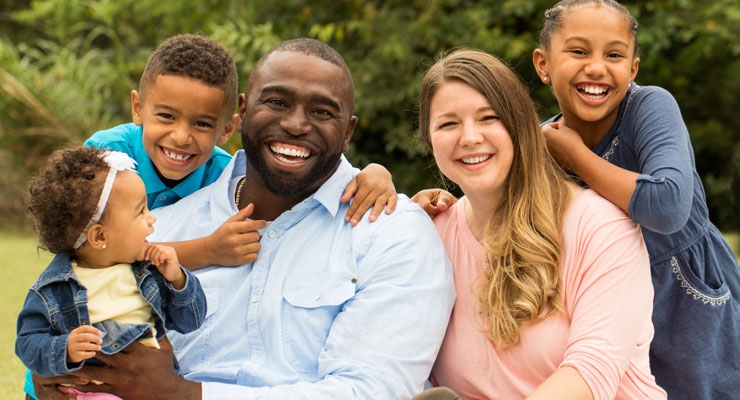Elle Morris, president, Elmwood NYC03.07.16
As beauty brands strive to remain relevant in the changing complexions and identities of the American consumer, there are two important considerations: the evolution of generations and the rise of technology.
As Generation Z (defined as those born between the 1990s and the 2010s) become beauty consumers, they are drastically shaking up the market. According to Magid Generational

The author, Elle Morris
Strategies, they will be America’s last generation with a Caucasian majority and the most diverse and multicultural of any generation in the U.S.—55% are Caucasian, 24% are Hispanic, 14% are African-American and 4% are Asian. According to U.S. News and World Report, the “two or more races” population is projected to be the fastest growing group over the next 46 years, with its population expected to triple in size. These diverse consumers are looking for beauty brands with a wide range of products and colors to complement their individuality.
Because of their positivity towards a diverse society where individualism is embraced, the lines are blurring and becoming more fluid with younger generations. They do not want to be defined by their race, demographics or even gender. Teens are not thinking, “Oh, I’m Latino, I better find the brand or section in the store that is for me.” Beauty brands and how they are traditionally marketed doesn’t matter because these young, diverse beauty consumers do not subscribe to the idea of “standard beauty.” They want to be seen as individuals and purchase quality products that make them feel like the best version of themselves, from brands that care about their wellbeing. Brands that care about wellbeing provide young consumers with confidence to be that best version they’re striving to be. Diverse consumers, specifically those from Gen Z, demand products they love and personally identify with—and are exercising their power to seek those brands out.
Consumers are no longer limited to products on the shelves of their local stores. These young and diverse consumers grew up in the digital age and they utilize the plethora of information at their fingertips. Instead of relying only on a product’s packaging for information, they research the product and rely heavily on customer reviews, including social media interaction, before making a purchase. If they are not satisfied with the limited store selection, they go online, talk with friends, and find smaller niche brands that meet their needs.
These boutique brands are more focused on personalizing experiences and catering to individual needs. They have a loyal following largely due to consumers’ digital access to them and the nimble-ness at which they change their palettes and offerings. Although these boutique brands aren’t easily found at local stores, they build relationships and interact with their customers on YouTube beauty tutorials, personal beauty blogs, etc. Brands like Urban Decay are expanding color palettes to stay on trend and appeal to this youthful and diverse audience. MAC is trying to be more fashion forward and offers an extensive and vibrant color range. Black Opal is making a switch from an ethnic beauty brand to a brand for all women and skin tones, and Bobbi Brown has created a brand that feels very global. Nars is another great example—especially with the diverse women they feature in their ads. While these brands are very inclusive of all skin types, they are also the brands that are really thinking about the diverse range of palettes and keeping the many complexions in mind when they launch their offerings. Their ads reflect the target consumers’ many faces and complexions. They feature models who go beyond the stereotypical beauty standards from decades ago and accurately represent today’s diverse population.
The traditional, established beauty brands need to start recognizing boutique brands as real competitors and take steps to respond by creating a more personalized experience for diverse consumers and expanding their color palettes to match their many complexions. Neutrogena is one mass-market brand working to respond to these consumer drivers by focusing on wellness, for example, and creating “Skin Care Products for a Healthier Skin,” encouraging people to find the right products for their individual skin type. Wellness is important to beauty because it allows consumers to think about themselves holistically, which provides them the confidence to connect with others and feel like the best version of themselves. The standards of beauty that were once about ‘how you looked’ are now changing to ‘how you feel.’ Younger consumers want to feel great, which allows them to look great. With the ever-evolving population, brands will need to cater to all skin types and tones, which with the reality of ‘blending races’ is becoming more diverse, complex and beautiful.
Brands in every category will be affected as the face of American consumers continues to change. Beauty brands in particular have a right to lead new thinking in retail. The diverse landscape represents an opportunity for leadership and innovation when beauty brands begin to think about individual needs and focus on the changing consumer. Further, beauty brands have the opportunity to embrace the complex and diverse definitions of beauty and help to shape how society thinks about race and identity. It’s an exciting time for brands that want to stand for something in the minds of consumers and do what they say – live their consumers’ ‘point of view’ at all touch points.
ABOUT THE AUTHOR
As Generation Z (defined as those born between the 1990s and the 2010s) become beauty consumers, they are drastically shaking up the market. According to Magid Generational
The author, Elle Morris
Because of their positivity towards a diverse society where individualism is embraced, the lines are blurring and becoming more fluid with younger generations. They do not want to be defined by their race, demographics or even gender. Teens are not thinking, “Oh, I’m Latino, I better find the brand or section in the store that is for me.” Beauty brands and how they are traditionally marketed doesn’t matter because these young, diverse beauty consumers do not subscribe to the idea of “standard beauty.” They want to be seen as individuals and purchase quality products that make them feel like the best version of themselves, from brands that care about their wellbeing. Brands that care about wellbeing provide young consumers with confidence to be that best version they’re striving to be. Diverse consumers, specifically those from Gen Z, demand products they love and personally identify with—and are exercising their power to seek those brands out.
Consumers are no longer limited to products on the shelves of their local stores. These young and diverse consumers grew up in the digital age and they utilize the plethora of information at their fingertips. Instead of relying only on a product’s packaging for information, they research the product and rely heavily on customer reviews, including social media interaction, before making a purchase. If they are not satisfied with the limited store selection, they go online, talk with friends, and find smaller niche brands that meet their needs.
These boutique brands are more focused on personalizing experiences and catering to individual needs. They have a loyal following largely due to consumers’ digital access to them and the nimble-ness at which they change their palettes and offerings. Although these boutique brands aren’t easily found at local stores, they build relationships and interact with their customers on YouTube beauty tutorials, personal beauty blogs, etc. Brands like Urban Decay are expanding color palettes to stay on trend and appeal to this youthful and diverse audience. MAC is trying to be more fashion forward and offers an extensive and vibrant color range. Black Opal is making a switch from an ethnic beauty brand to a brand for all women and skin tones, and Bobbi Brown has created a brand that feels very global. Nars is another great example—especially with the diverse women they feature in their ads. While these brands are very inclusive of all skin types, they are also the brands that are really thinking about the diverse range of palettes and keeping the many complexions in mind when they launch their offerings. Their ads reflect the target consumers’ many faces and complexions. They feature models who go beyond the stereotypical beauty standards from decades ago and accurately represent today’s diverse population.
The traditional, established beauty brands need to start recognizing boutique brands as real competitors and take steps to respond by creating a more personalized experience for diverse consumers and expanding their color palettes to match their many complexions. Neutrogena is one mass-market brand working to respond to these consumer drivers by focusing on wellness, for example, and creating “Skin Care Products for a Healthier Skin,” encouraging people to find the right products for their individual skin type. Wellness is important to beauty because it allows consumers to think about themselves holistically, which provides them the confidence to connect with others and feel like the best version of themselves. The standards of beauty that were once about ‘how you looked’ are now changing to ‘how you feel.’ Younger consumers want to feel great, which allows them to look great. With the ever-evolving population, brands will need to cater to all skin types and tones, which with the reality of ‘blending races’ is becoming more diverse, complex and beautiful.
Brands in every category will be affected as the face of American consumers continues to change. Beauty brands in particular have a right to lead new thinking in retail. The diverse landscape represents an opportunity for leadership and innovation when beauty brands begin to think about individual needs and focus on the changing consumer. Further, beauty brands have the opportunity to embrace the complex and diverse definitions of beauty and help to shape how society thinks about race and identity. It’s an exciting time for brands that want to stand for something in the minds of consumers and do what they say – live their consumers’ ‘point of view’ at all touch points.






























